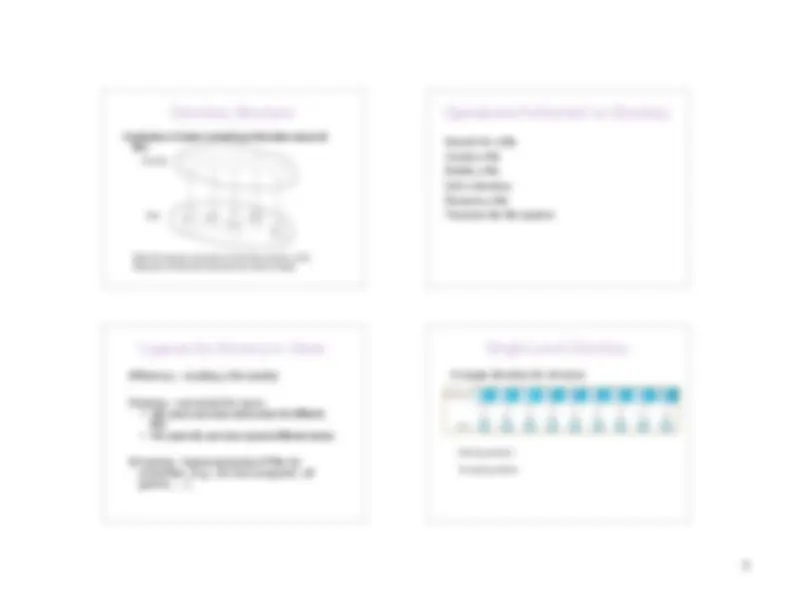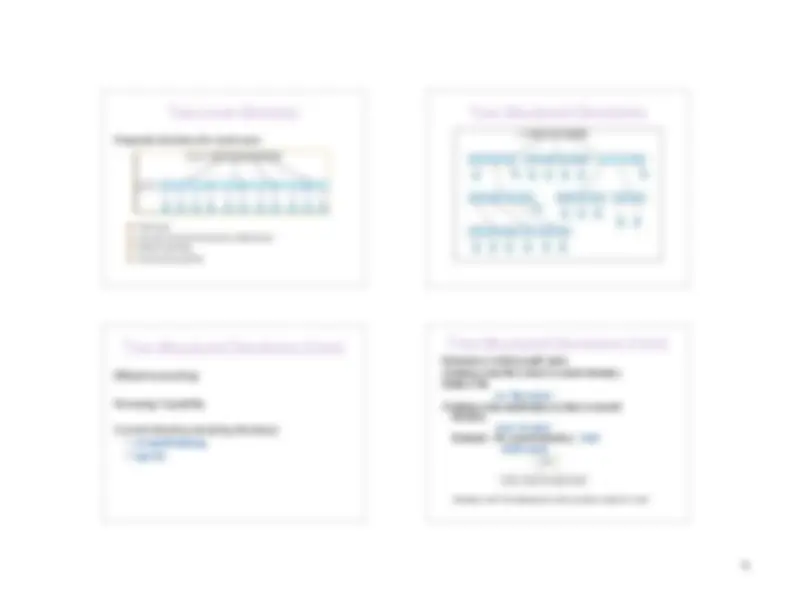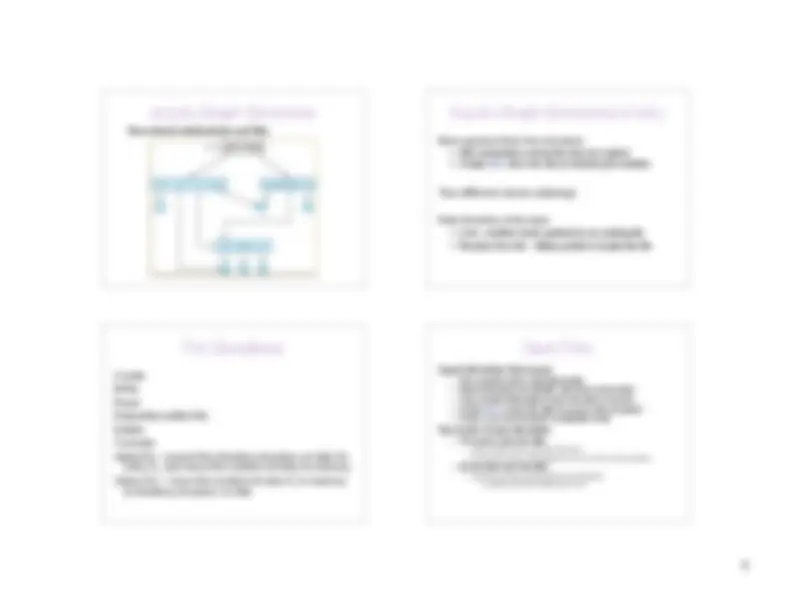





Study with the several resources on Docsity

Earn points by helping other students or get them with a premium plan


Prepare for your exams
Study with the several resources on Docsity

Earn points to download
Earn points by helping other students or get them with a premium plan
Community
Ask the community for help and clear up your study doubts
Discover the best universities in your country according to Docsity users
Free resources
Download our free guides on studying techniques, anxiety management strategies, and thesis advice from Docsity tutors
Material Type: Notes; Professor: Wang; Class: Operating Systems; Subject: Computer Science; University: William and Mary; Term: Fall 2008;
Typology: Study notes
1 / 6

This page cannot be seen from the preview
Don't miss anything!




File system is the OS abstraction for storage resources
(especially, disk)
Track/sector <=> files
for storage resources
To a user process, a file is a contiguous block of bytes
User view: named collection of bytes
OS view: collection of blocks on physical non-volatile
storage device
Types:
Name – a string used to uniquely identify a file
Identifier – unique tag (number) identifies file within file
system
Type – needed for systems that support different types
Location – pointer to file location on device
Size – current file size
Protection – controls who can do reading, writing, executing
Time, date, and user identification – data for protection,
security, and usage monitoring
These meta-data (Information about files) are kept in the
directory structure, which is maintained on the disk but
cached in memory if the file is open.
Path name
Can have the same file name for different user
Efficient searching
No grouping capability
Absolute or relative path name
Creating a new file is done in current directory
Delete a file
rm <file-name>
Creating a new subdirectory is done in current
directory
mkdir <dir-name>
Example: if in current directory /mail
mkdir count
prog copy prt exp count
Deleting “mail” ⇒ deleting the entire subtree rooted by “mail”
Have shared subdirectories and files
i
i
i
i
Open() file before first access
Two levels of open file tables